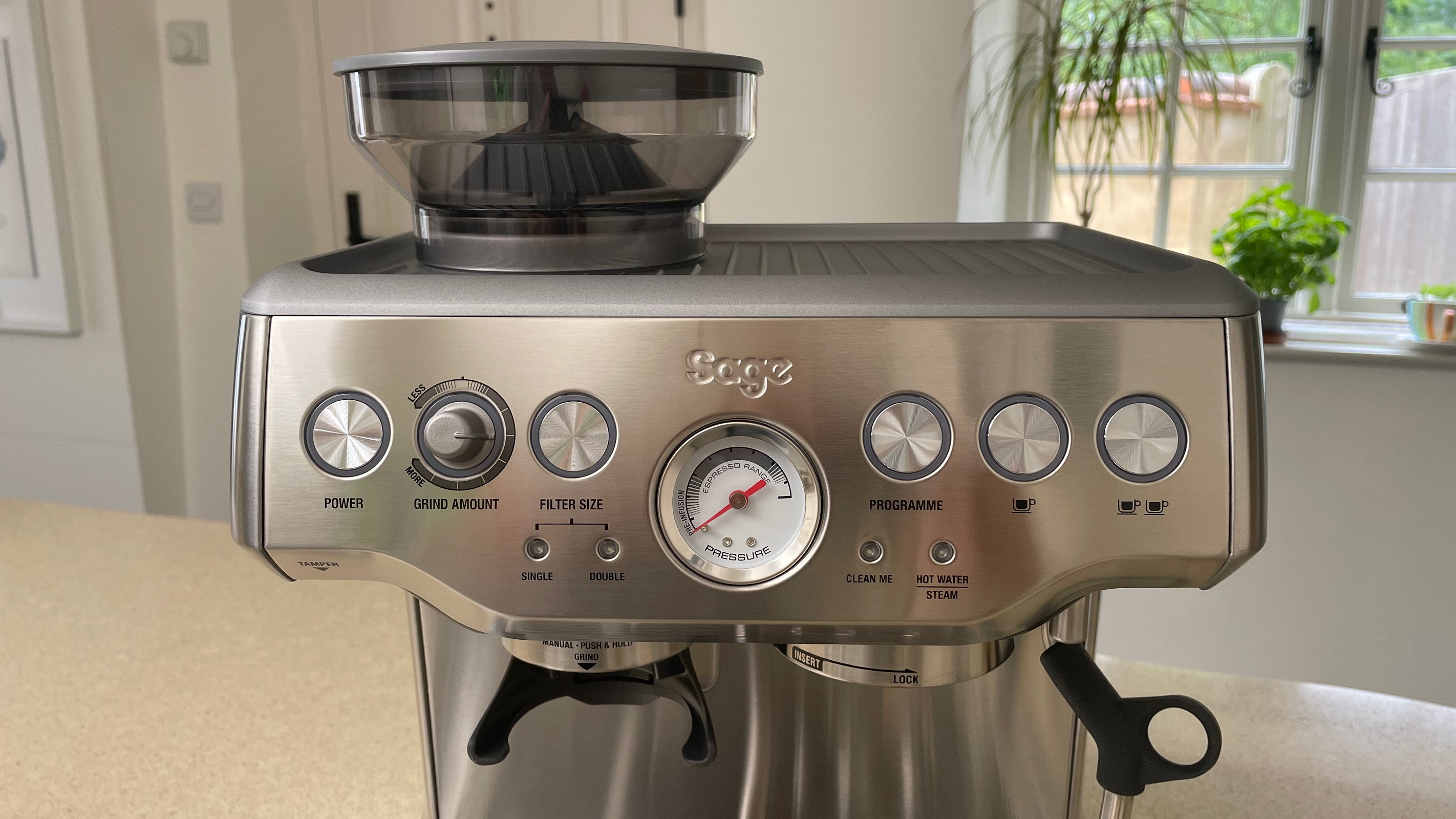TechRadar Verdict
The Barista Express builds on the entry level espresso machines from the brand, adding a bean hopper and integrated grinder for fresher, tastier coffee. With easily adjustable grind settings, coffee dosing, and espresso volumes it gives you lots of control over the finished result, yet it’s not complicated to get to grips with. Be prepared to put in some time to get the settings right, but once you’ve nailed it, you’ll be impressing your friends with perfect barista coffee every time.
Pros
- +
Simple to understand
- +
Plenty of adjustable settings
- +
Makes a tasty espresso
Cons
- -
Expensive
- -
Requires some trial and error
- -
Coffee dispensing, tamping and using the razor can be messy
Why you can trust TechRadar
Sage the Barista Express: two-minute review
Known as Sage in the UK or Breville in the US and Australia, this premium kitchen appliance brand is recognized for making some of the best espresso machines you can buy. From its simple entry-level models to investment-level coffee machines that allow you to control every aspect of the drink using a fancy color touch screen display, there’s something for everyone.
The Barista Express is a mid-range model, it builds on the entry-level espresso machine - the Bambino - by adding a built-in burr grinder to dispense freshly ground coffee right into the portafilter. But unlike the more automated bean-to-cup style machines from other brands, this one allows you to flex your barista skills. You’ll need to tamp the coffee yourself, use the razor tool to get it to the perfect level, and steam your own milk, all of which might take a bit of practice to perfect, particularly if you’re a novice.
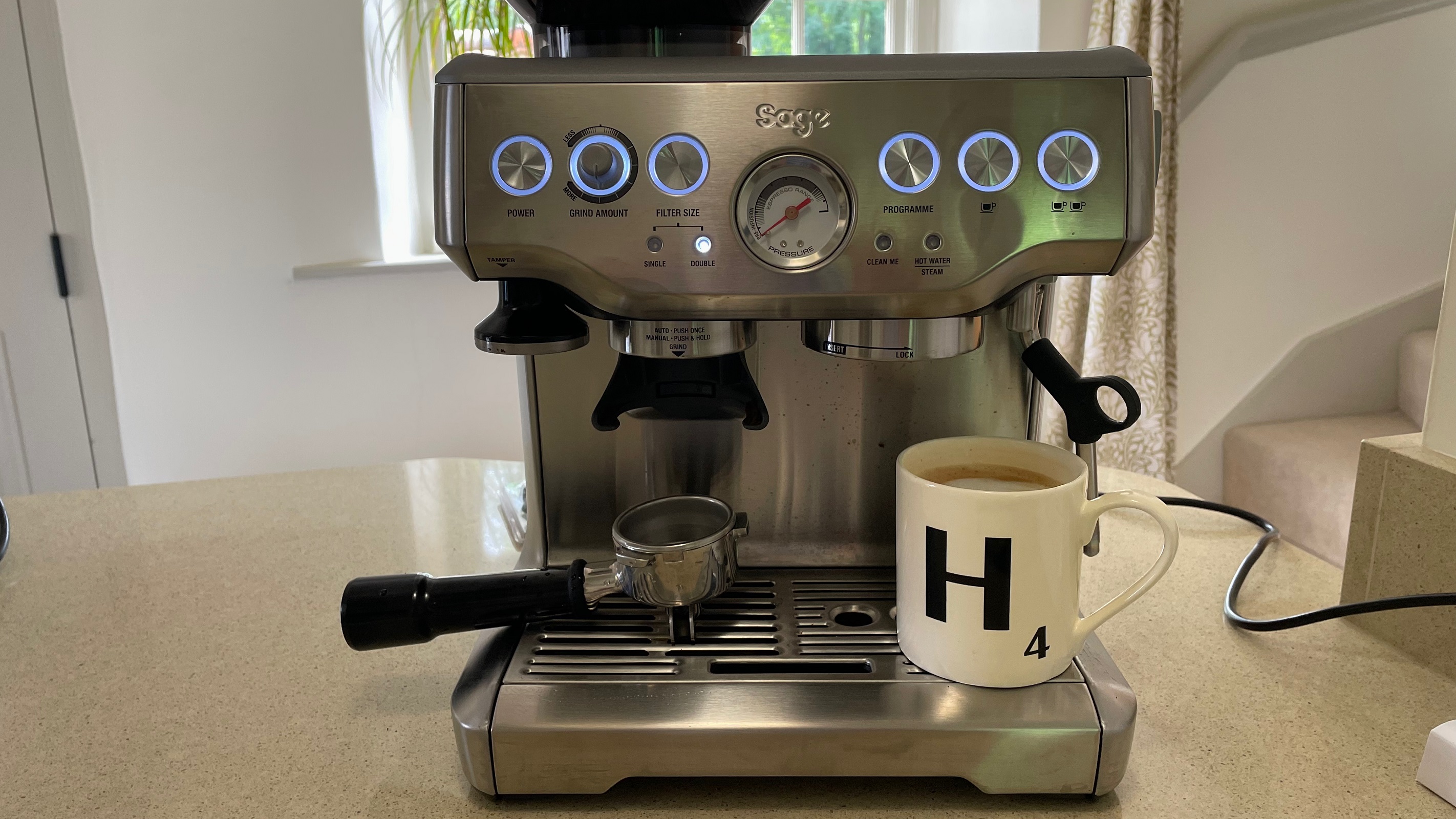
To get the best possible results you can adjust the grind size, amount of coffee dispensed, volume, and temperature of the espresso, then once you’ve hit your caffeine limit for the day, use it to dispense hot water for tea. We found it simple to use, with easily adjustable settings, it’s certainly not as intimidating as it might look. Getting the settings just right took a bit of trial and error, but after a few slightly weak cups of coffee we were producing intense espresso time after time. It’s a good bit of kit that’ll suit coffee fans looking for a machine that offers plenty of control over the finished drink, but it doesn’t come cheap.
Sage the Barista Express review: price & availability
- List price: £629.95/ $699.95/ AU$999
As we’ve already mentioned, the Barista Express is sold under the Sage brand in the UK or Breville in the US and Australia. You can buy it directly from Sage or Breville online as well as other retailers such as Amazon.
This is one of the brands mid-range coffee machines, a step up from its more entry-level models such as the Bambino, but with fewer fancy features than pricier machines such as the Oracle Touch.
Sage the Barista Express review: design
- 15 bar Italian pump
- Integrated burr grinder with 16 grind settings
- 2 liter/ 67oz removable water tank
While this model isn’t as chunky as some coffee machines we’ve reviewed, it still requires virtually double the counter space of the most compact espresso machines you can buy, measuring 15.9 x 12.5 x 13.8 inches/ 40.4 x 31.8 x 35.1cm (h x w x d).
In the box you’ll find a 54mm stainless steel portafilter that comes with four filter baskets, the two dual wall filter baskets are for use with pre-ground coffee, which is useful for making the odd decaf espresso. Meanwhile the single wall filter baskets are designed for extracting the best possible coffee from freshly ground beans.
The stainless-steel milk jug has a helpful temperature strip that changes color as the milk heats up and takes the thinking out of steaming milk to the correct temperature. You’ll also find an array of cleaning accessories and a water filter included in the box.
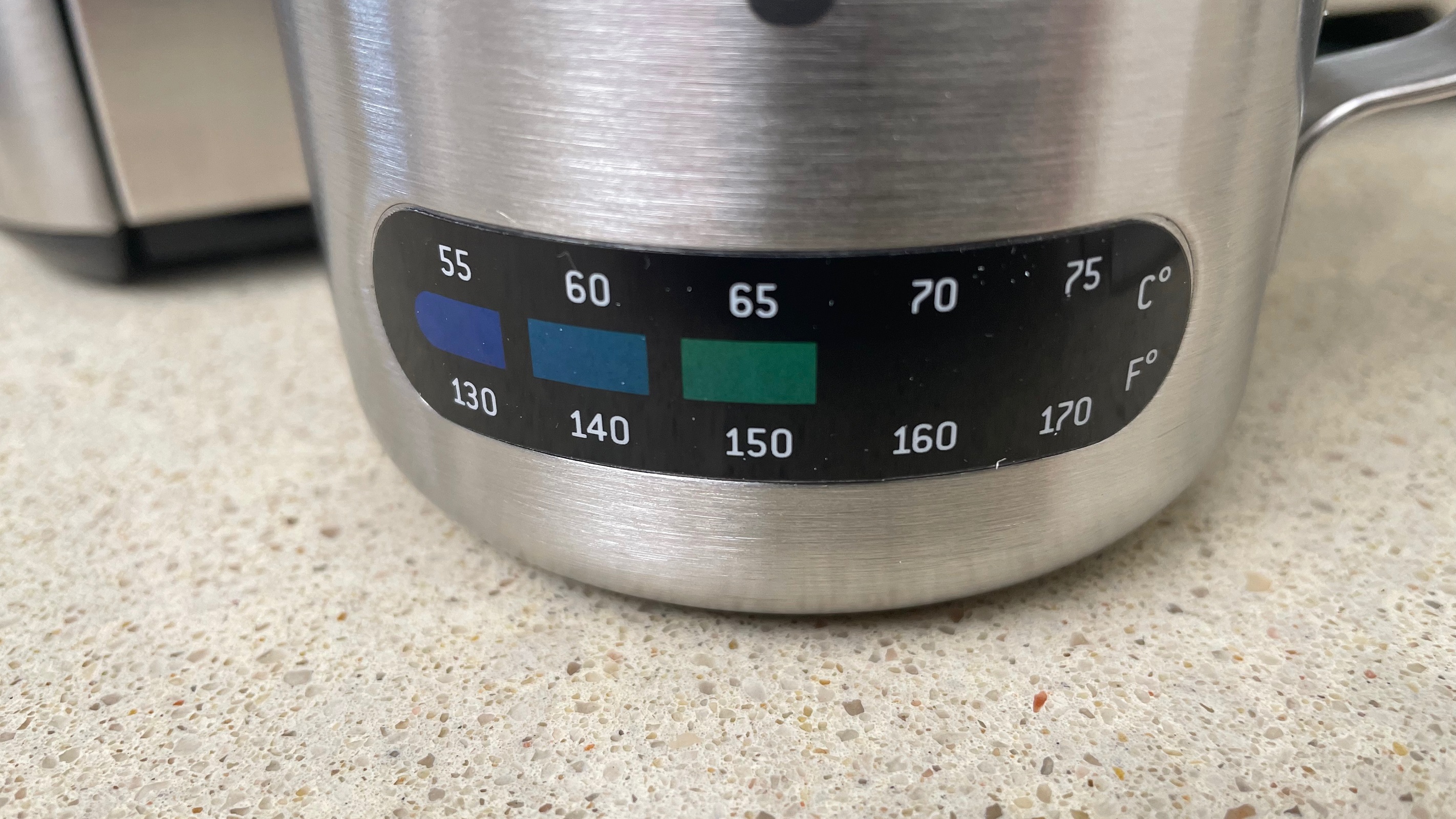
You can choose between a stainless steel or black machine - there’s also a red or gray option if you’re in Australia. And the machine itself looks like a serious bit of kit; it’s certainly sturdy and although it’s slightly intimidating if you’re a novice, the clearly laid out controls take no time to get to grips with.
The initial setup requires you to run hot water through the various outlets on rotation until the tank is empty which is a straightforward process. After this it’s a case of loading it up with beans and experimenting to get the perfect coffee.
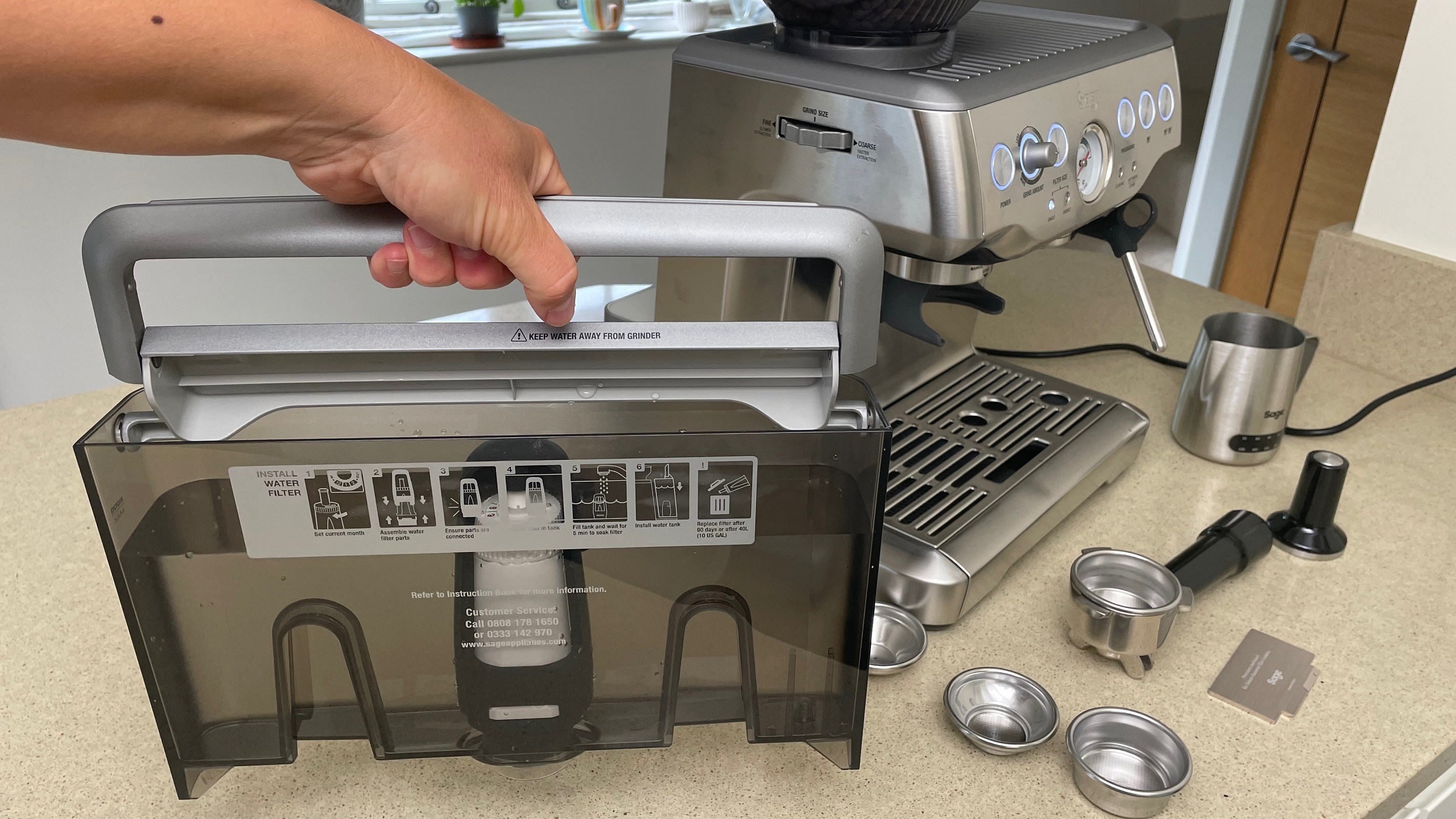
A simple dial gives you access to 16 levels of grind size and a second dial allows you to control the amount dispensed. To start the process, just choose between the single or double filter, push the portafilter into the grinding cradle, give it a nudge forwards and grinding will begin – it couldn’t be simpler. Once the portafilter is piled up with ground coffee you get to play barista by tamping it down and using the razor tool to create the perfect ‘puck’. Then, once in position it’s just a case of pressing either the one cup or two cup buttons to dispense coffee, you can opt for the preset volume or adjust it to your liking.
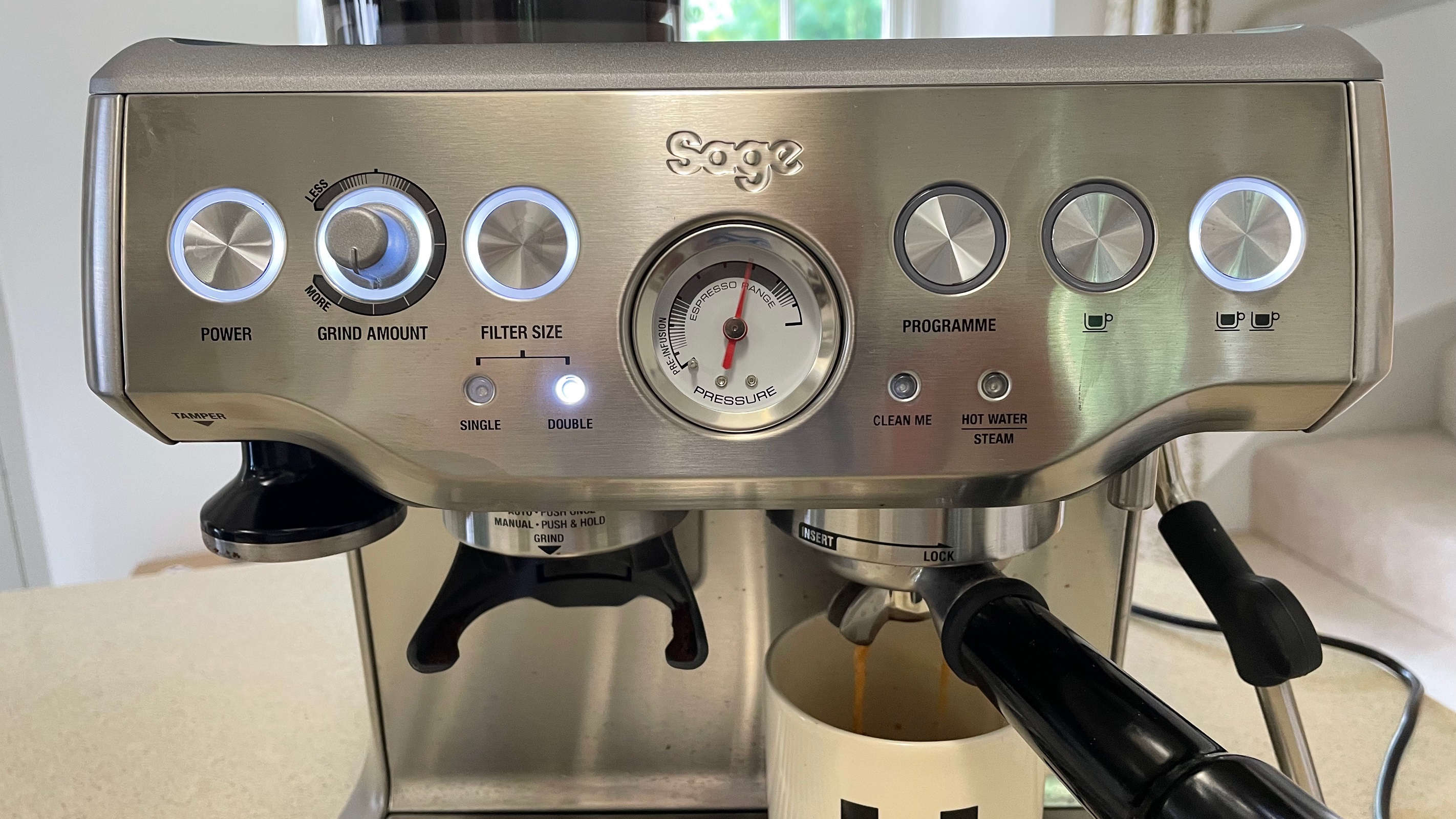
A switch on the side allows you to dispense hot water for tea or steam to heat up milk in the supplied jug. And at the bottom there’s a large removable drip tray to catch any mess or spills.
Sage the Barista Express review: performance
- Intense espresso with a thick crema
- All parts feel sturdy and well made
- Takes time to get the perfect settings
For the first cup of coffee the manual advises setting the grind size to 8, which is the middle of the 16 different grind levels. However, this left us with a weak and under extracted espresso, so for each subsequent coffee we decreased the grind size by one notch on the dial. Finally on the eighth cup, with the dial on level 1 - almost the finest grind possible - it began producing a properly extracted espresso with a smooth thick crema.
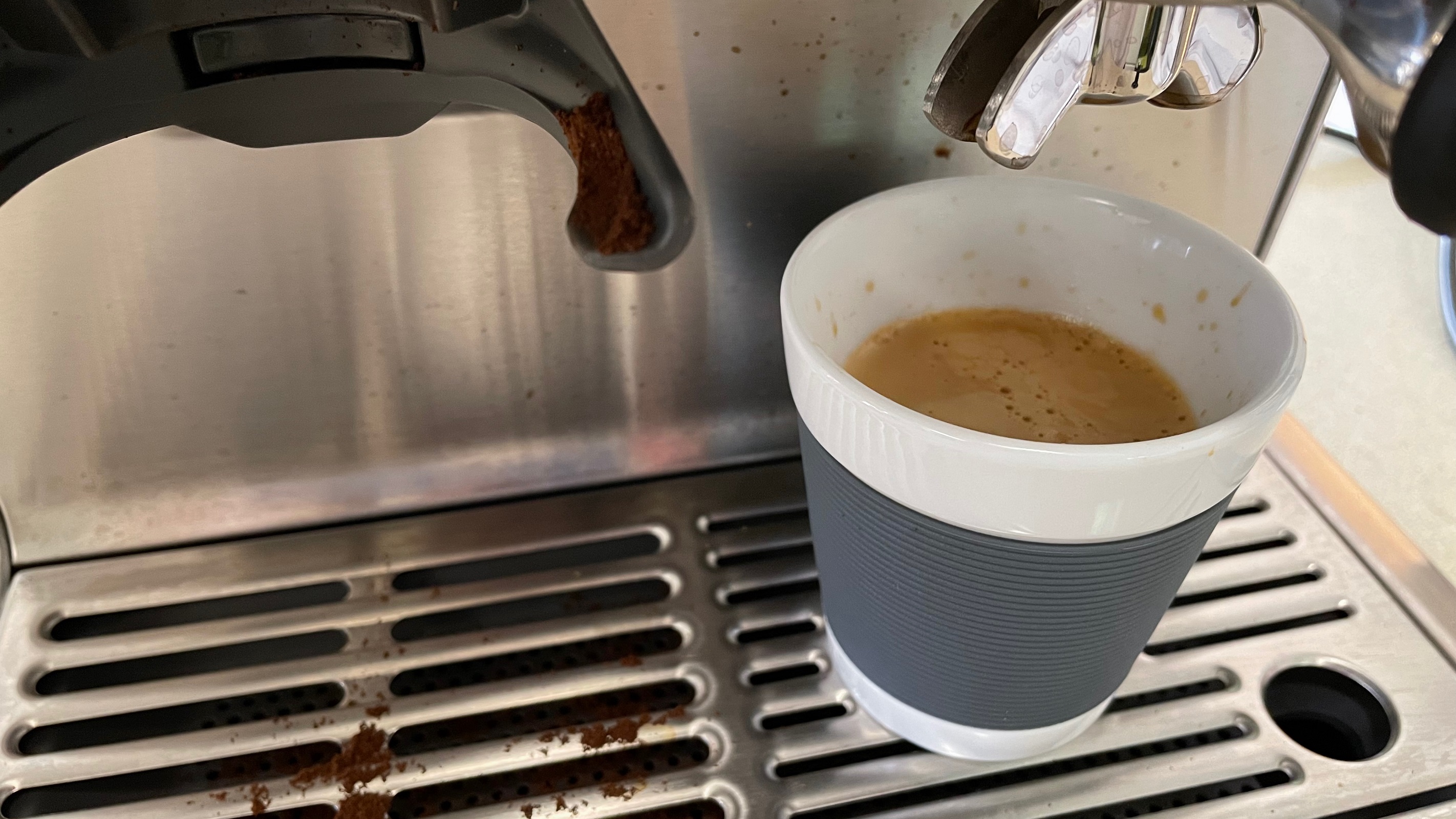
As we adjusted the grind size, we also had to adjust the grind amount, increasing it from the middle setting to make sure there was enough coffee dispensed into the portafilter. Because even though the coffee piles up as it’s dispensed, it soon disappears into the filter basket as it’s tamped firmly down. The razor is a unique tool that you won’t see your local barista use, but after tamping you can use it to trim off any excess coffee in the portafilter to make sure it’s at exactly the right level. So it also serves as a useful guide, if it’s trimming loads off, you probably need to reduce the grind amount and if the razor doesn’t touch the coffee, you’ll need to dispense more.
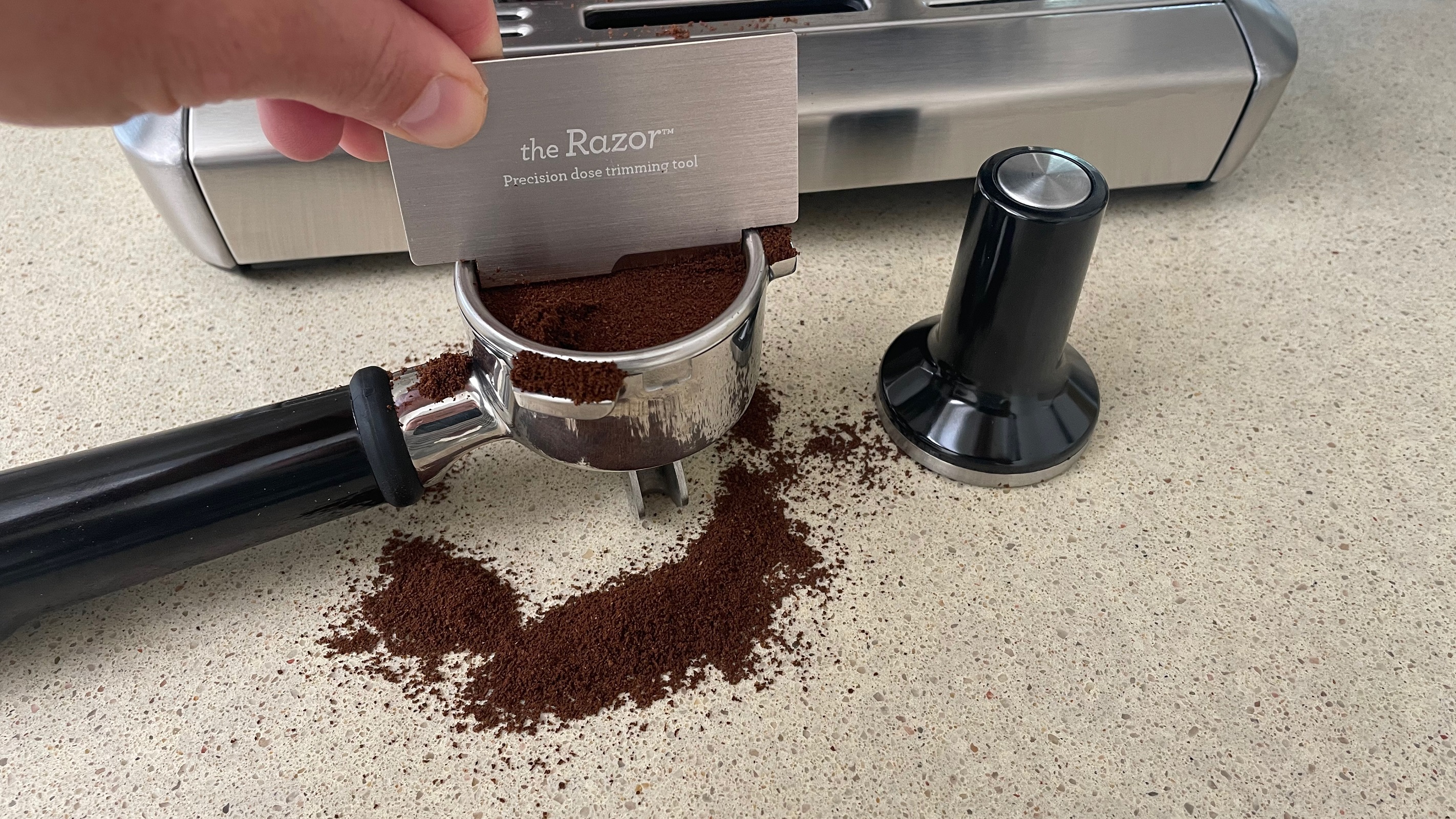
We liked having the pressure gauge during the initial setup process, the correct pressure range is very clearly marked and it’s a helpful indicator that you can watch as your espresso pours, to see whether it’s being extracted at the correct pressure. The manual then advises what adjustments you’ll need to make to correct an under or over extracted espresso, which is usually either the grind size or the amount of pressure you use when tamping.
Once we’d made those first eight cups and perfected the settings, it was easy to produce consistently great espresso every time. The machine takes around 40 seconds to warm up when first switched on, then for us it took 17 seconds to grind and dispense the coffee, but this’ll vary depending on your settings. As you’d expect, grinding is the loudest part of the process and hit 80dB on our noise meter.
As with all manual espresso machines, tamping the coffee with the correct amount of pressure can take a bit of getting used to. We found that the coffee needed to be piled high in the portafilter or there wasn’t enough, but this meant tamping could be quite messy and inevitably ground coffee would end up all over the counter. Pouring a double espresso takes around 25 seconds and it can splash a bit as it dribbles into the cup.
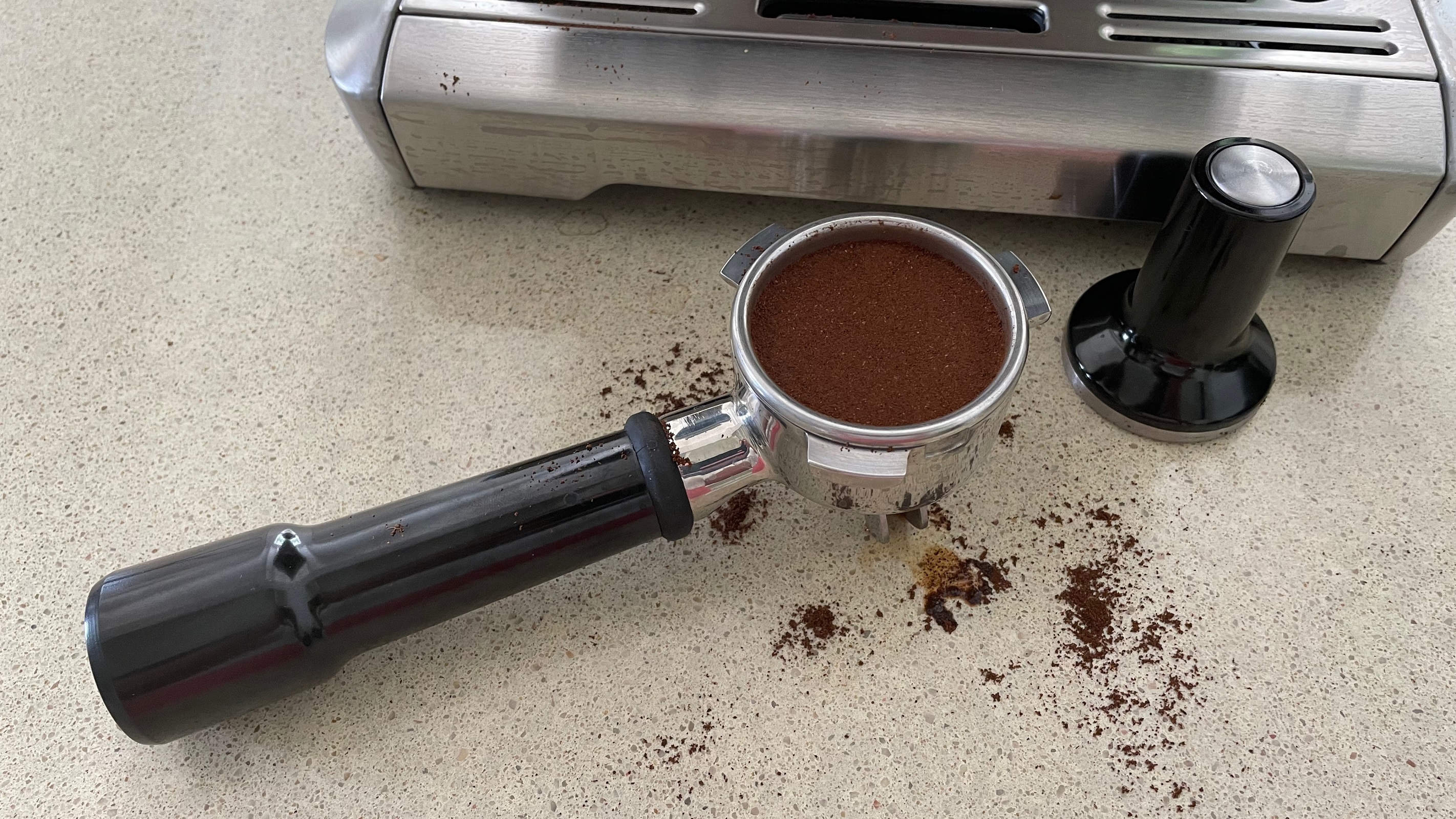
To steam milk, the switch has to be turned to the steam position to heat up, which takes around 12 seconds, then you can put the steam wand into the milk. The temperature gauge on the jug is really helpful if you’re new to steaming your own milk. As always, creating the perfect microfoam when steaming milk does take practice if you’re a novice, but we found it quite easy with this machine, no matter whether it was dairy or non-dairy milk. Unlike some steam wands,, it wasn’t too screechy, but steaming milk is almost as loud as grinding the coffee beans.
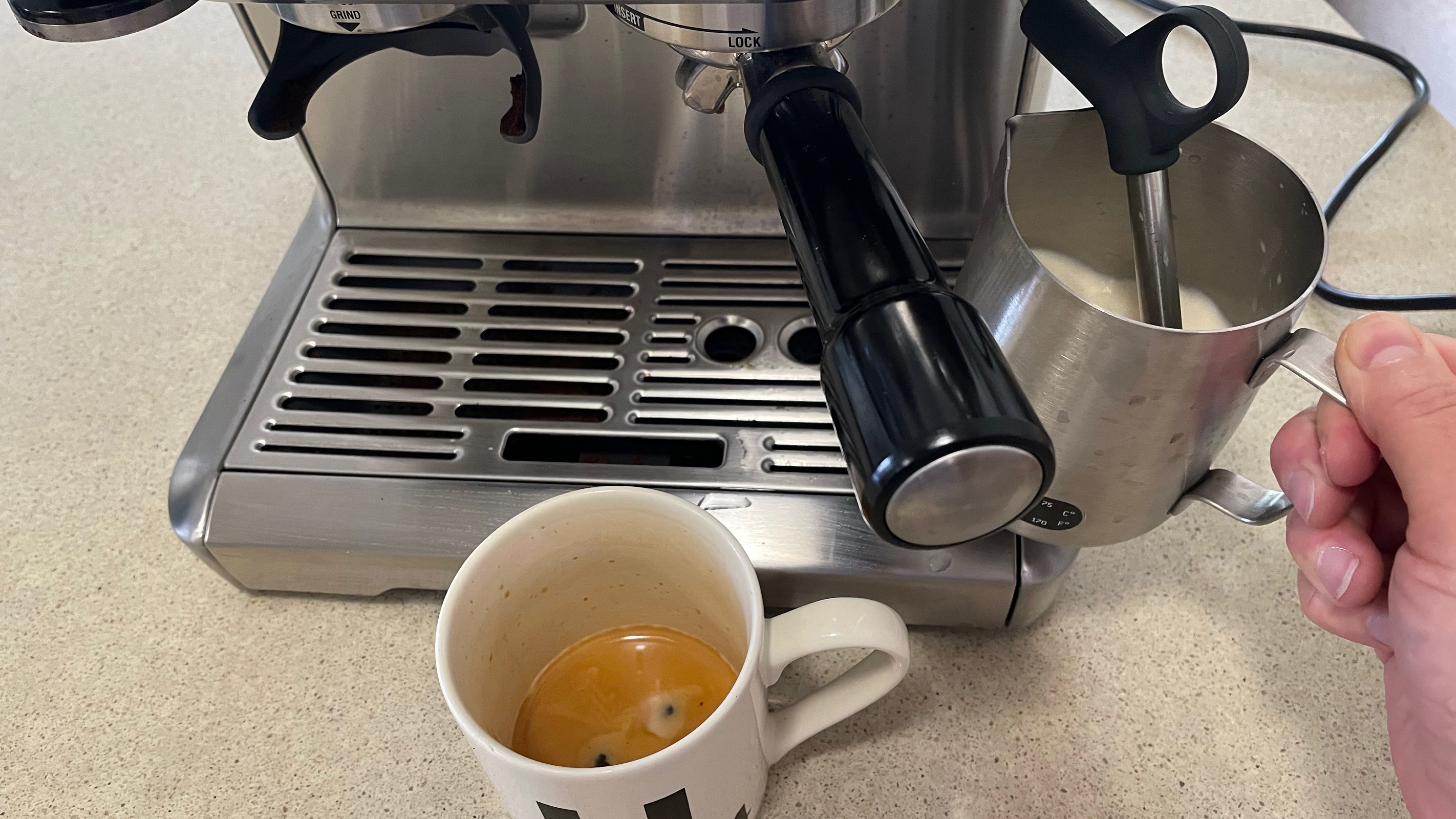
Daily cleaning after use is easy enough and just requires a quick rinse of the portafilter. The steam wand should be wiped clean, followed by dispensing a small amount of steam to clean it through. When the drip tray is full, a yellow sign pops up which says ‘Empty Me!’. As with all coffee machines, more thorough cleaning and descaling is a bit more long winded but it’s an automated process and the machine prompts you when it’s time to do it, so it’s just a case of following the steps in the manual.
Should I buy the Sage the Barista Express?
Buy it if...
You want an integrated grinder
If you want to enjoy the tastiest possible coffee, then brewing it using freshly ground beans is the way to go. And having a grinder built-in to the coffee machine makes it an easy part of the process. But, just in case you need to make the odd cup of decaf, pre-ground coffee can also be used.
You enjoy the ritual of making a great coffee
Grinding beans, tamping the coffee using just the right pressure and pouring the perfect volume of espresso before manually steaming milk to create a silky microfoam is a ritual that takes time and shouldn’t be rushed, and for coffee aficionados the process is often as enjoyable as the drink itself.
You want a barista style machine that’s simple to use
Although there are plenty of customizable settings, this machine comes with clear controls that make it simple to fine tune your coffee, unlike some machines you won’t have to reach for the manual every time you need to make adjustments
Don't buy it if...
You want fuss-free coffee at the touch of a button
If you want a coffee machine that’ll dispense your morning espresso at the touch of button and doesn’t require you to be properly awake, this barista style machine isn’t the one for you.
You’re on a budget
While it’s far from the most expensive espresso machine on offer from Sage/ Breville - in fact it’s less than half the price of the brand's top-of-the-range models - this is still an expensive appliance that’ll put it out of reach if you’re on a budget.
You’re short on counter space
If your kitchen counters are already overflowing with appliances, you might be better off with the Bambino which will take up around half the counter space.
- First reviewed: June 2022
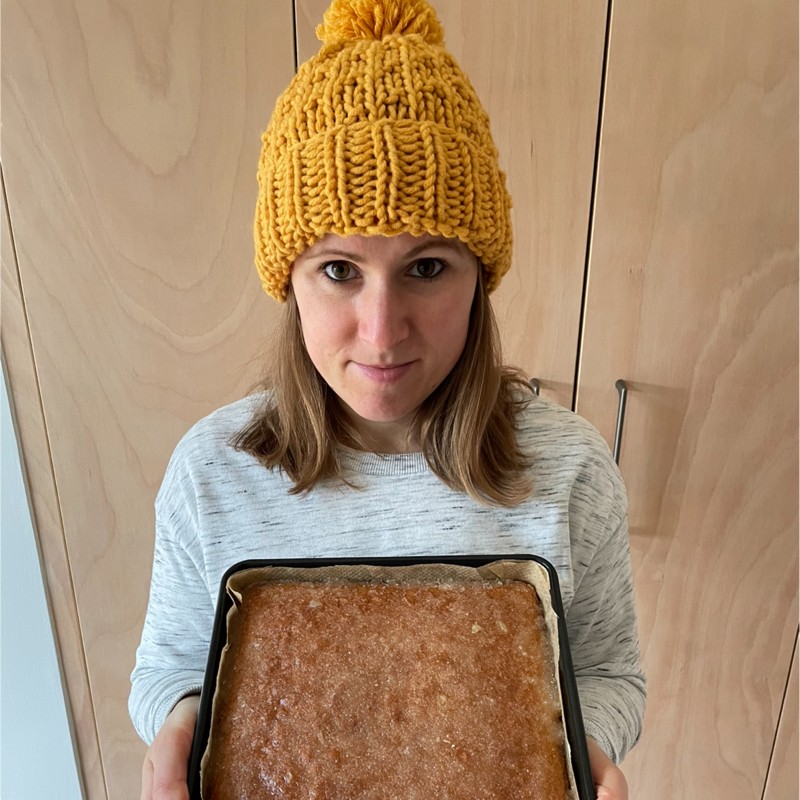
Helen is a freelance writer who specializes in kitchen and home appliances, and has written for some of the biggest home-related titles around. She has been reviewing small appliances, including blenders, air fryers, and vacuums for more than 15 years. When she's not busy testing the latest food and home gadgets, she enjoys DIY and gardening.
